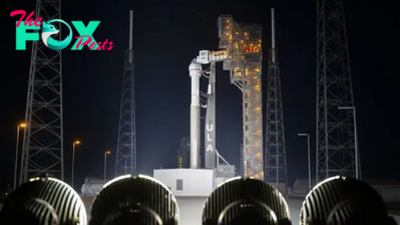Science
'This is a journey, not a destination': Stunning map of the Milky Way's center exposes new mysteries about our galaxy
The Milky Way is our home galaxy, but how well do we actually know it? As part of a NASA-funded project, a team led by Villanova University researchers has obtained a never-before-seen view of the central engine at the heart of our galaxy.
The new map of this central region of the Milky Way, which took four years to assemble, reveals the relationship between magnetic fields at the heart of our galaxy and the cold dust structures that dwell there. This dust forms the building blocks of stars, planets, and, ultimately, life as we know it. The central engine of the Milky Way drives this process.
That means a clearer picture of dust and magnetic interactions builds a better understanding of the Milky Way and our place within it. The team's findings also have implications beyond our galaxy, offering glimpses of how dust and magnetic fields interact in the central engines of other galaxies.
Understanding how stars and galaxies form and evolve is a vital part of the origin story of life — but, until now, the interaction of dust and magnetic fields in this process has been somewhat overlooked, especially within our own galaxy.
"The center of the Milky Way and most of the space between stars is filled with a lot of dust, and this is important for our galaxy's life cycle," David Chuss, research team leader and a physics professor at Villanova University, told Space.com. "What we looked at was light emitted from these cool dust grains produced by heavy elements forged in stars and dispersed when those stars die and explode."
Related: James Webb telescope confirms there is something seriously wrong with our understanding of the universe
A complicated picture of Milky Way magnetic fields

In the heart of the Milky Way exists a region called the central molecular zone, which is packed with an estimated 60 million solar masses of dust. This vast reservoir of dust has a temperature of around minus 432.7 degrees Fahrenheit (minus 258. 2 degrees Celsius). That's just a few degrees above absolute zero (minus 460 Fahrenheit), the hypothetical temperature at which all atomic movement would cease.
-

 Science13h ago
Science13h agoJapan captures 1st image of space debris from orbit, and it's spookily stunning
-

 Science1d ago
Science1d agoMars may have been more Earth-like than we thought, discovery of oxygen-rich rocks reveals
-

 Science1d ago
Science1d agoSiberia's 'gateway to the underworld' is growing a staggering amount each year
-

 Science1d ago
Science1d ago'Lost' satellite finally found after orbiting undetected for 25 years
-

 Science1d ago
Science1d agoEarth from space: Mysterious wave ripples across 'galaxy' of icebergs in Arctic fjord
-

 Science2d ago
Science2d ago'We're meeting people where they are': Graphic novels can help boost diversity in STEM, says MIT's Ritu Raman
-

 Science2d ago
Science2d agoSpace photo of the week: A planet-size explosion rocks the sun's 'mossy' corona
-

 Science3d ago
Science3d agoChina launches Chang'e 6 sample-return mission to moon's far side


















